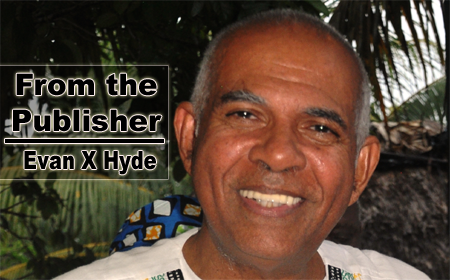United States president Jimmy Carter, who sat in the Oval Office from 1976 to 1980, has been considered a weakling by American hawks. That is because, during his term in office, the Sandinistas triumphed over the ruthless Somozas in Nicaragua (1979), leftist Maurice Bishop overthrew dictatorial Eric Gairy in Grenada (1979), and the Ayatollah Khomeini ran the brutal Shah out of Iran, whereupon Iranian students kidnapped and held some forty-odd United States diplomats hostage in Tehran.
Those 1979 stories are all worthy of serious analysis and discussion, but, as Belizeans prepare to celebrate the fortieth anniversary of our political independence (September 1981), the event which is most relevant to us during the Carter term was his government’s decision to support, finally, Belize’s independence. That support took the form of a statement by the U.S. representative in the United Nations Fourth Committee on Monday, November 3, 1980, just two and a half months before Carter would demit office and be replaced by Ronald Reagan, a hardline right winger.
On Friday afternoon, October 31, 1980, the highest ranking U.S. State Department official ever to visit Belize, Mr. John Bushnell, Deputy Assistant Secretary of State, had arrived in Belize City from New Orleans for a weekend of talks with various officials here. These officials included Premier George Price, the British Governor, the Commander British Forces, members of the Opposition, and, of course, officials of the U.S. Consulate itself in Belize.
The imminence of independence for Belize as 1980 was coming to an end alarmed me, because I believed that an “independent” People’s United Party government in which Deputy Premier C. L. B. Rogers was so powerful, would not tolerate myself and an AMANDALA which had proven itself so opinionated and daring over the years.
The heavily financed Opposition United Democratic Party had won a landslide victory in the December 1977 Belize City Council election and appeared set to take national power in the next general election, scheduled for 1979.
As a defeated member of the PUP’s “Dynamic Nine,” I had written an article in AMANDALA after the election giving some reasons for the PUP defeat. But, the ruling PUP, which had been in power since 1954, had a party line to explain the defeat: the UDP had “stolen the election.” For me to go against the party line required that I be disciplined, and I did feel the pressure, believe me.
Now what some people forget is that in 1980, tension was very high in Belize between the newly elected (1979) PUP Government Ministers, Assad Shoman and Said Musa, who were considered communists by Belize’s business community, and an Anti-Communist Society here, led by the late Santiago Perdomo, a former PUP Minister between 1961 and 1979 who had defected from the party.
The civil war in Guatemala was very, very bloody in 1980, and probably contributed to Carter’s decision to support Belizean independence. Guerrillas from the Peten were operating in Belize from time to time, and Shoman has been accused of giving aid and succor to them. The situation in Belize itself was so bitter that Shoman’s driver, Alvin August, was shotgunned to death on Monday night, December 8, 1980 in Santa Elena, Cayo, after leaving Minister Shoman’s home. The following night in Orange Walk Town, the windshield of the pickup of Minister Joe Briceño, considered one of the anti-communists in Cabinet, was shot up. The AMANDALA headline story of Friday, December 12, 1980, said that Briceño was reported to have been in the pickup but was unhurt.
Following are the last two paragraphs of that headline story: “As independence for Belize draws near … , the country is being swarmed by agents and runners of several major powers who have great interest in little Belize. A pattern of escalating violence is used by some powers to ‘destabilize’ governments they wish to control, guide, or replace.
“Earlier this year, it was alleged that Minister Fred Hunter (right wing) had found a bomb in his pickup at Crooked Tree, while three months ago Minister Harry Courtenay’s (left wing) car was time bombed at his home on Princess Margaret Drive.”
I had been a committed ally of the Shoman/Musa combine during the 1979 general election race, but now I felt I had to get out of the newspaper business. I held a couple discussions with Mr. Musa, my principal business partner, the details of which I will reveal some other time, but he claimed that the party was not willing to buy me out. Thus it was that I ended up fighting against the same people in 1981 for whom I had fought so hard in 1979.
A Heads of Agreement, the terms of which were supposed to guide Belize’s independence, was released in March of 1981, and by the end of that month a Belizean hell had broken loose. In early April, a state of emergency was declared, and it was under that state of emergency that Belize became independent on September 21, 1981.
It is typical of Belize, I guess, that it is as if though what happened in 1980 and 1981 did not really happen. But, those events did take place, and they have a meaning, I suggest, insofar as the confrontations which have now begun to take place in The Jewel.
Power to the people.

